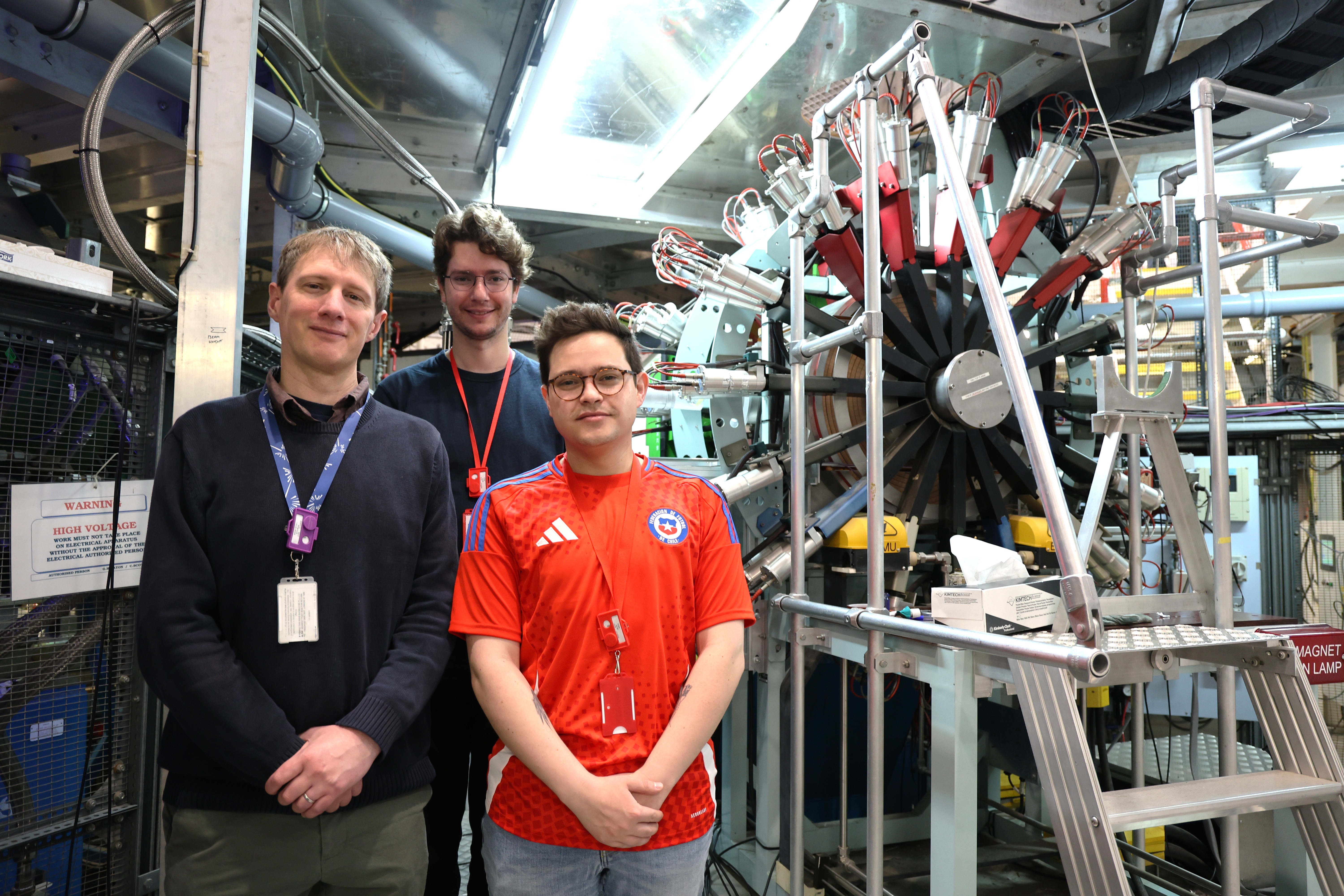Nico is a chemist, originally from Chile, who completed his PhD at the University of Glasgow, and stayed there for three years afterwards as a postdoctoral researcher. During his time in Glasgow, he attended both the muon and neutron training courses at ISIS and attended multiple experiments as a co-investigator.
This gave him an introduction to neutron and muon techniques and their value in his field of research: battery materials. Nico is now back in Chile, working as a postdoctoral researcher at the University of Concepción. He wanted to continue his work using neutrons and muons, but there is no neutron or muon facility in Chile, and it is uncommon to travel abroad to use either technique.
In 2025, he was awarded a Visiting Research Fellowship by the Faraday Institution and used this to continue working with the collaborators he had built up relationships with when working with Duncan Gregory in Glasgow. The scheme offers an opportunity for researchers from Chile, Argentina or Brazil to work alongside Faraday Institution battery researchers in the UK for up to six months. Nico has spent time at the University of Birmingham with Phoebe Allan, Javier Castells-Gil, Wilgner Lima da Silva, Bo Dong and Peter Slater and will return to the UK in the near future for a placement with Louis Piper at the University of Warwick.
Building on these partnerships, Nico helped put together three muon proposals for ISIS beamtime, all of which were successful. Nico came to ISIS in early October 2025 to join his collaborators for the first two experiments, using funding from his Chilean fellowship to cover his costs. Both experiments have used muons to study lithium diffusion in new battery materials.
 “The experiments are intense but totally worth it. It is also great to meet other scientists working on the different beamlines. Each time I come, I end up asking even more questions to Peter (Baker), who I've known for 7 years! All the instrument scientists I've worked with at ISIS (Ron Smith and Helen Playford on Polaris and Svemir Rudic on Tosca) have always been incredibly helpful. They are amazing".
“The experiments are intense but totally worth it. It is also great to meet other scientists working on the different beamlines. Each time I come, I end up asking even more questions to Peter (Baker), who I've known for 7 years! All the instrument scientists I've worked with at ISIS (Ron Smith and Helen Playford on Polaris and Svemir Rudic on Tosca) have always been incredibly helpful. They are amazing".
The measurements on EMU have been very successful, with one exciting observation: in his new samples, the lithium ions seem to be jumping very fast. “The data analysis will be fun", he adds.
He wants to encourage other researchers from Chile to use neutrons and muons, as the current awareness of these techniques is low. “I will be going back to tell all my Chilean colleagues that neutrons and muons are cool! I hope this motivates more researchers from Chile to apply for access this world-class facility, and that together we continue tackling global challenges through science" says Nico.
“Muon spectroscopy allows us to study diffusion at the atomic scale, unlike conventional laboratory techniques. This means we can understand our samples, and then use this understanding to make new, improved, battery materials," he concludes.
Nico's recent paper on solid state electrolytes for battery materials, including work done on EMU and Polaris, is available at DOI: 10.1039/D5SC03999A
Photo, centre right: Peter Baker from ISIS, Wilgner Lima da Silva from University of Birmingham and Nico Flores-González from University of Concepción, Chile.
